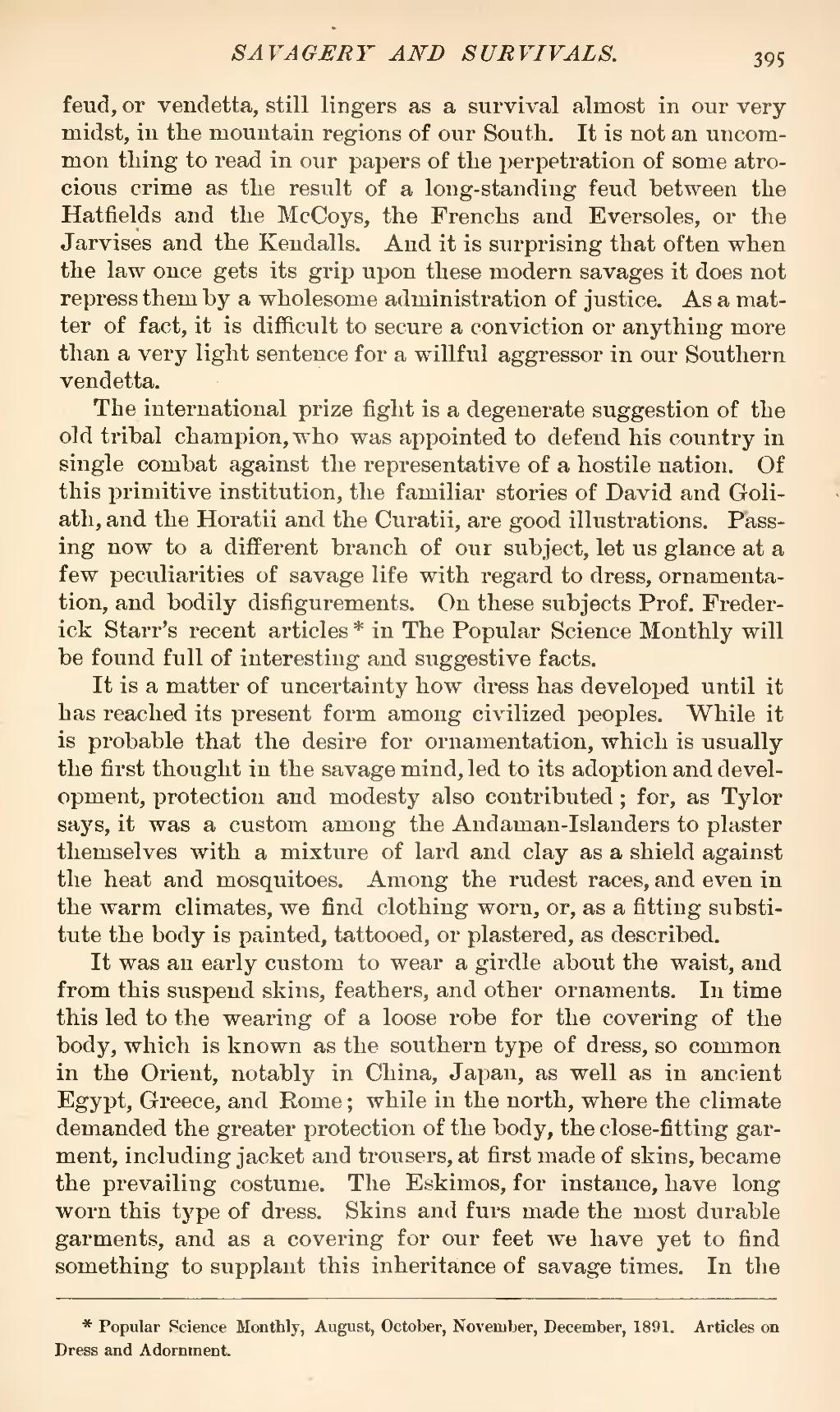feud, or vendetta, still lingers as a survival almost in our very midst, in the mountain regions of our South. It is not an uncommon thing to read in our papers of the perpetration of some atrocious crime as the result of a long-standing feud between the Hatfields and the McCoys, the Frenchs and Eversoles, or the Jarvises and the Kendalls. And it is surprising that often when the law once gets its grip upon these modern savages it does not repress them by a wholesome administration of justice. As a matter of fact, it is difficult to secure a conviction or anything more than a very light sentence for a willful aggressor in our Southern vendetta.
The international prize fight is a degenerate suggestion of the old tribal champion, who was appointed to defend his country in single combat against the representative of a hostile nation. Of this primitive institution, the familiar stories of David and Goliath, and the Horatii and the Curatii, are good illustrations. Passing now to a different branch of our subject, let us glance at a few peculiarities of savage life with regard to dress, ornamentation, and bodily disfigurements. On these subjects Prof. Frederick Starr's recent articles[1] in The Popular Science Monthly will be found full of interesting and suggestive facts.
It is a matter of uncertainty how dress has developed until it has reached its present form among civilized peoples. While it is probable that the desire for ornamentation, which is usually the first thought in the savage mind, led to its adoption and development, protection and modesty also contributed; for, as Tylor says, it was a custom among the Andaman-Islanders to plaster themselves with a mixture of lard and clay as a shield against the heat and mosquitoes. Among the rudest races, and even in the warm climates, we find clothing worn, or, as a fitting substitute the body is painted, tattooed, or plastered, as described.
It was an early custom to wear a girdle about the waist, and from this suspend skins, feathers, and other ornaments. In time this led to the wearing of a loose robe for the covering of the body, which is known as the southern type of dress, so common in the Orient, notably in China, Japan, as well as in ancient Egypt, Greece, and Rome; while in the north, where the climate demanded the greater protection of the body, the close-fitting garment, including jacket and trousers, at first made of skins, became the prevailing costume. The Eskimos, for instance, have long worn this type of dress. Skins and furs made the most durable garments, and as a covering for our feet we have yet to find something to supplant this inheritance of savage times. In the
